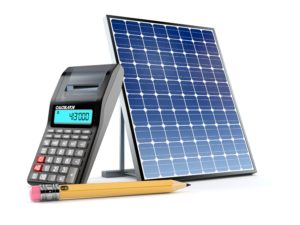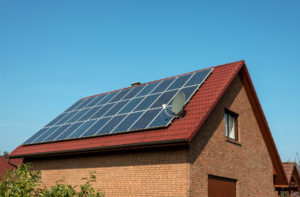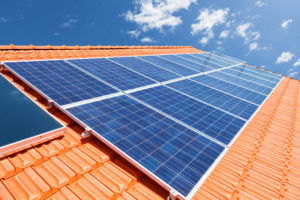Determining the number of solar panels needed for a 1500-square-foot house is a key step toward energy independence and sustainability. This article provides a step-by-step guide to calculate the number of solar panels required for such a home, considering factors like energy consumption, solar panel types, and local sunlight conditions. Understanding these elements is crucial for anyone looking to harness solar power effectively. From exploring different solar panel systems to breaking down costs and incentives, this comprehensive guide empowers homeowners with the knowledge to make informed decisions about their solar energy investments. Whether new to solar energy or looking to optimize your current setup, this article offers valuable insights into creating a more sustainable and cost-effective home.
Contents
- 1 Key Takeaways
- 2 A Quick Look At Solar Panel And System Basics
- 3 Typical Solar Panel Types
- 4 How Many Solar Panels Do We Need For Residential Applications?
- 5 Determine How Much Power You Require
- 6 Get A Brief Idea About Daily Peak Sun Hours
- 7 Calculate Number Of Panels
- 8 Solar Panels Calculation For 1,500 Square Foot House
- 9 Solar Panels Cost Breakdown
- 10 Factors To Consider Before Installing Solar Panels
- 11 Case Study: Residential Solar Panel Installation in Henderson, Nevada
- 12 Expert Insights From Our Solar Panel Installers About Determining the Number of Solar Panels for a 1500 Square Foot House
- 13 Experience Solar Excellence with Us!
- 14 Wrapping Up
Key Takeaways
- To determine the number of solar panels needed for a 1,500 square foot house, you should consider factors like monthly energy usage, area of the house, and access to direct sunlight in your area.
- On average, for a 1,500 square foot house in the US, you would need to install 15 or more solar panels, with each panel typically having a watt rating of around 400 watts.
- It’s important to consider factors like the type of solar system (grid-tied, hybrid, off-grid), federal tax credits, the type of inverter, local financial incentives, and the need for a battery when planning a solar panel installation for your home.
A Quick Look At Solar Panel And System Basics
The success of a solar installation relies on knowing the basics of solar equipment. So, here is a short explanation of how solar panels work.
- Solar panels have PV cells that absorb sunlight
- These PV cells convert solar energy into electric power
- This power is generally in the form of direct current (DC)
- Solar panel systems have auxiliary equipment like inverter, electric box, and battery storage
- An inverter in a solar system converts DC into AC power
- This power provides electricity to run your household appliances
Depending on your requirement and state laws, this system is divided into the following types.
- Off-grid system
- Grid-tied system
- Hybrid system
Typical Solar Panel Types
Before moving on to the calculation part, it is imperative to have a basic idea of the following prominent solar panel types.
- Polycrystalline solar panels
- Monocrystalline solar panels
- Thin-film panels
- PERC
PERC panels are highly efficient in terms of energy conversion efficiency (Rating around 25%), followed by monocrystalline and polycrystalline.
You will observe that the cost of monocrystalline solar panels is the highest. This price tag is due to its high power capacity and energy rating.
Hence, before installing solar panels, it’s vital to consider all these basics.
How Many Solar Panels Do We Need For Residential Applications?
You can calculate solar panels cost by considering factors like monthly energy usage, area of the house in sq ft, and access to direct sunlight in your area.
Follow this step-by-step process to determine the number of solar panels you need.

Determine How Much Power You Require
Your average electricity usage is the key to beginning the calculation process. However, it would help if you had an accurate idea of how much electricity you use yearly.
A typical electric bill shows power consumed in kWh (kilowatt-hours). According to the US Energy Information Administration, the following is average household consumption.
- Yearly: 10,715 kWh
- Monthly: 893 kWh
These numbers give you a fair idea about the common residential electricity needs.
Get A Brief Idea About Daily Peak Sun Hours
Peak sun hours (PSH) give you a rough estimate of sunlight in your location. Since the US has a large geographical area, every state receives a variable amount of solar radiation.
To estimate monthly peak sun hours, you need to multiply the daily PSH by 30. In the US, the average PSH ranges between four to five hours.
So, you can calculate how much solar electricity panels will produce in a month. Simply put, you need to multiply monthly PSH with 1 kWh of solar panel energy.
Calculate Number Of Panels
Your solar system capacity will be a result of the following formula.
Solar System = Energy Usage/PSH
It will be better to keep both the units in terms of monthly capacity. Once you get the required capacity of the solar system, divide it by the watt rating of desired solar panels. During this calculation, ensure both values are either in watt or kilowatt.
Solar Panels Calculation For 1,500 Square Foot House
Solar panels can save hefty electricity bills by reducing the reliance on conventional energy sources like fossil fuels.
It is vital to plan a solar system that meets your energy needs to reduce your utility bill. If you own a 1,500 sqft house in the US, your solar needs depend on the following factors.
- Monthly utility bills
- Appliances in the house
- Peak sunlight hours in the area
- State Laws
The solar system calculations can vary greatly depending on your state of residence.
For a 1,500 square foot house, you would need to install 15 or more solar panels.
Example: Since the average household solar systems range around 6 kW, the calculation breaks down as follows.
Number of panels = solar system capacity/solar panels watt rating = 6000/400 = 15
In this example, the solar panel watt rating is considered 400 watts. You can find residential solar panels with 250 to 400 W power output in the US.
It is essential to realize that a house with the same square footage can require more panels. The reason is simple – If you buy solar panels with a low power rating, the number of panels will increase.

Solar Panels Cost Breakdown
Before investing in a typical home solar system, you need to assess your roof space, upfront costs, and federal government schemes.
Considering a 1,500 sq ft house that requires a 6 kW solar panel system, the overall cost of solar panel installation will hover around the $ 18,000 mark.
This calculation considers an average cost of $ 2.71 per watt for residential solar panel systems.
However, other costs can vary depending on factors as follows.
- Solar system contractor charges
- Type of solar panels
- Labor cost
- Electricity incentives
- Miscellaneous requirements
It is always lucrative to install panels on a south-facing roof. This direction gives maximum sunlight exposure to the solar panels.
You can even sell excess solar power to a local utility company. Hence, it is vital to have basic information about the types of solar systems.
Factors To Consider Before Installing Solar Panels
Now that you understand how many solar panels can power a 1,500 sq ft house, it is vital to consider these factors.
Consider Utility Grid Tied System
A grid-tied system is less expensive than hybrid and off-grid systems. You can switch between solar energy and utility power as required.
This system is popular as the excess solar energy can be sold to the local electrical company. However, it is vital to verify this facility as the rules of such a system vary in different US states.
Claim The Solar Federal Tax Credit
Homeowners can avail of a 30% tax credit for solar systems installed in the United States of America.
So, in addition to the total cost reduction of your energy consumption, you can benefit from this government scheme. At this time, the scheme is valid for system installations up to 31st December 2032.
You can also claim section 25D tax credit in case of a community solar project contribution. Hence, US citizens can profit from such incentives apart from the technical aspects.

Invest In A Solar Inverter
At this time, you can install two types of inverters.
- String inverter
- Microinverter
The second type is more expensive but provides better efficiency in the case of a shaded solar array. Since most electric appliances run on AC power, an inverter is a useful investment.
Hence, in addition to generating enough electricity, installing solar equipment that completes a full-proof system is vital.
Know About Local Financial Incentives
Calculating how many watts you need is a straightforward task. However, it is crucial to conduct a state study on solar incentives amidst all this research.
You can find the following types of incentives for residential solar systems.
- Net Metering
- Investment subsidies
You can claim solar energy system equipment credit, property tax exemption, and sales tax exemption in your state.
States like Iowa, Maryland, New Mexico, Colorado, and New Jersey offer lucrative incentives.
Decide The Need Of A Battery
You don’t need a battery bank for grid-tied systems. However, a battery is mandatory if you opt for hybrid and off-grid solar systems.
Batteries store energy collected by solar panels during the day. Hence, you can receive more power under low light conditions or at night.
However, since batteries are expensive, you should plan about their inclusion. An average home with median electricity needs connected to the utility grid does not generally need a battery bank.
Still, you may opt for this solar item if you have the budget. Consider including all equipment for an accurate estimate of the system.
Case Study: Residential Solar Panel Installation in Henderson, Nevada
Background
We were approached by a homeowner in Henderson, Nevada, looking to reduce their electricity bills and carbon footprint through the installation of solar panels. The goal was to create a sustainable and cost-effective energy solution for their 1500 square foot house.
Project Overview
Our initial step was to evaluate the energy needs of the household. The average monthly energy consumption was around 900 kWh, which provided a clear picture of the system’s requirements. We also assessed the roof space to determine the best configuration for the solar panel installation.
Implementation
Using advanced Named Entity Recognition and Information Extraction methods, we identified key factors such as local peak sun hours and the most efficient panel types for the area. Henderson enjoys an average of five peak sun hours per day, making it an ideal location for solar energy.
We decided on high-efficiency monocrystalline panels due to their superior energy conversion rates and installed a total of 16 panels, each with a capacity of 400 watts. The panels were strategically placed on the south-facing roof to maximize sunlight exposure, ensuring optimal performance throughout the year.
To complement the panels, we installed a microinverter system, which provided enhanced efficiency and reliability, especially beneficial in shaded areas of the roof. This setup not only converted the DC power generated by the panels into usable AC power but also allowed for individual panel performance monitoring.
Results
Post-installation, the homeowner experienced a significant reduction in their electricity bills, with savings of up to 70% per month. The system generated more than enough energy to meet the household’s needs, with excess power fed back into the grid, providing additional financial benefits through net metering.
The installation qualified for the Federal Tax Credit, which covered 30% of the total installation cost, along with local state incentives that further reduced the initial investment. The system’s performance was consistent and required minimal maintenance, primarily annual cleaning to maintain efficiency.
Summary
This residential solar installation in Henderson, Nevada, showcases the transformative impact of solar energy on household energy management. By leveraging high-efficiency monocrystalline panels and a robust microinverter system, we provided the homeowner with a sustainable and cost-effective energy solution. The project not only reduced their energy bills but also enhanced their contribution to environmental sustainability, demonstrating the value of solar energy for residential applications.
Expert Insights From Our Solar Panel Installers About Determining the Number of Solar Panels for a 1500 Square Foot House
Understanding your household’s energy consumption is crucial in determining the number of solar panels needed. For a typical 1500 square foot house, this often translates to around 15 to 20 panels, depending on the wattage of the panels and local sunlight conditions.
Senior Solar Installer
The efficiency of the solar panel type you choose significantly impacts the overall installation. Monocrystalline panels, though more expensive, provide higher energy output, making them ideal for homes with limited roof space.
Lead Solar Engineer
Investing in a good inverter system is just as important as the panels themselves. A microinverter setup, for instance, can enhance performance, especially in shaded conditions, ensuring your system operates efficiently throughout the day.
Solar Project Manager
Experience Solar Excellence with Us!
Trust in Solar Panels Network USA, where our seasoned experts deliver top-quality solar solutions for homes and businesses nationwide. With a legacy of countless successful installations and a commitment to sustainable energy, we’re your reliable partner in the solar journey. Ready for a brighter, eco-friendly future? Call us now at (855) 427-0058 and harness the power of the sun!
Wrapping Up
A 1,500 square foot house will operate well around 15 to 20 solar panels. Still, the exact value will differ due to various factors.
The solar panels capacity, electricity consumption, peak sunlight hours are defining factors to determine the exact number. Still, most US households utilize the energy parameters mentioned in this article.
You can reap the benefits of more electricity from a cleaner energy source. However, discuss the roof space area with a solar panel contractor. After all, the panels should have adequate space for installation.
Local solar contractors can clear other doubts regarding energy usage and additional costs.
About the Author
Solar Panels Network USA stands at the forefront of solar energy solutions, driven by a team of seasoned solar engineers and energy consultants. With over decades of experience in delivering high-quality solar installations and maintenance, we are committed to promoting sustainable energy through customer-centric, tailored solutions. Our articles reflect this commitment, crafted collaboratively by experts to provide accurate, up-to-date insights into solar technology, ensuring our readers are well-informed and empowered in their solar energy decisions.

